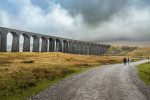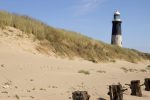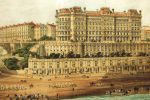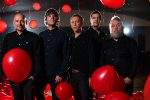A History of Whitby Lighthouse
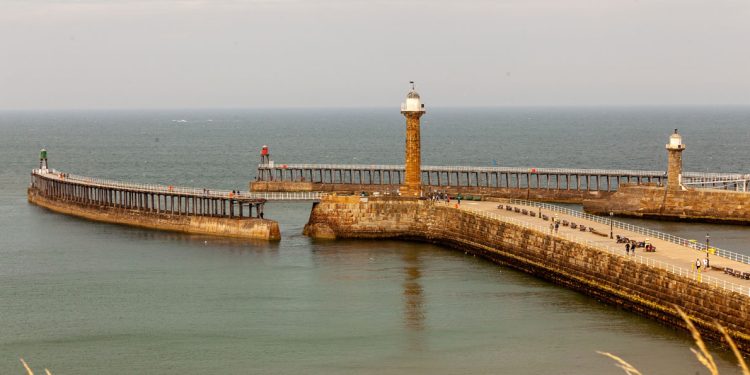
By Roger O’Reilly
When alum shale began being mined near Whitby in the 17th Century, what had previously been a village quickly became of port of some distinction. Being the only deep-water anchorage on the North Yorkshire it grew into an important industrial port, shipbuilding town and even a whaling centre. During the 18th and 19th centuries, Whitby was one of the main trading ports on the east coast.
The West Whitby Pier was constructed in 1632. It replaced the previous wooden pier, and this was followed in 1702 by the East Pier. The West Pier was illuminated until 1831 by a hexagonal lantern. Then, all passing colliers were required to pay a toll. Monies from this then went towards the maintenance and future improvement of the piers. In 1831 the West Pier light was replaced by the handsome Doric column we see today.
Designed by Francis Pickernell, the engineer to the Whitby Harbour Trustees, it initially displayed a green light visible for 16km. The lighthouse is made from local sandstone and rises to a height of 22 metres. The lighthouse can be operated manually and is now used by local pilots to guide large ships through the pier heads. The 500 ft extensions to these piers were built in 1914.
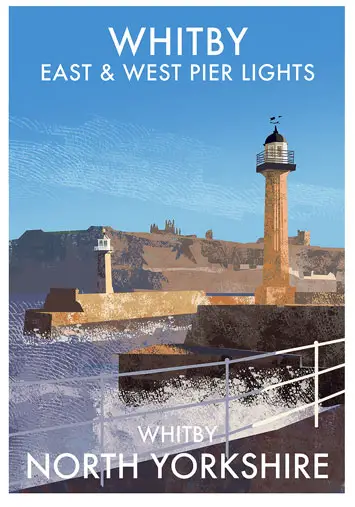 During the holiday season, the tower is open to the public. You can climb the 81 steps to the lantern room where you have a stunning view across the harbour and surrounding area. If you look downwards, you’ll even see the image of a whale skeleton that’s been moulded into the ground.
During the holiday season, the tower is open to the public. You can climb the 81 steps to the lantern room where you have a stunning view across the harbour and surrounding area. If you look downwards, you’ll even see the image of a whale skeleton that’s been moulded into the ground.
“Famously eerie”
There are few lighthouses that don’t have a ghost story attached to them. And, in this most famously eerie of all towns, it is perhaps unsurprising that the west pier has its own. The story? Well, one stormy night the keeper noticed that the light had gone out while he was somewhere else. How he noticed it from afar has never been explained! In any case, he hurried towards the tower. And, soaked to the skin, sped up the steps to re-ignite the lantern.
Having rekindled the light he sped back down the stairs. Perhaps to resume a game of knurr and spell. But, he slipped on the now greasy stone stairs and fell headlong into the void and departed this mortal coil. Some folk say that on a black blustery night, a lonesome figure can be seen making his way with a covered lantern towards the lighthouse before he disappears through the locked and bolted door.
The story of the East Pier light is a little less melodramatic. And, all the poorer for that.
Built in 1855 and rising to a less impressive 17 metres, the West arm of Whitby Pier is an impressive structure with a hexagonal lantern room set on a stone Doric column. Thanks to the new footbridge that was installed in 2020, you can once again walk the full length of the pier and right up to the beacon.
Because of its aspect, with the harbour mouth facing north, Whitby is one of the only two places on the East Coast where you can see the sun rise and set in the North Sea. From late May to late July, crowds gather to witness this unusual event, but beware. Once the sun disappears, Whitby reverts to its true form. And you may run into a rain-soaked lightkeeper hurrying down the steps clutching a glowing lantern beneath his cloak!
Artist and author Roger O’Reilly has spent the last five years illustrating the 350 lighthouses of Britain and Ireland. They are available as prints from lighthouseeditions.com.
A book will be out in early 2024.
